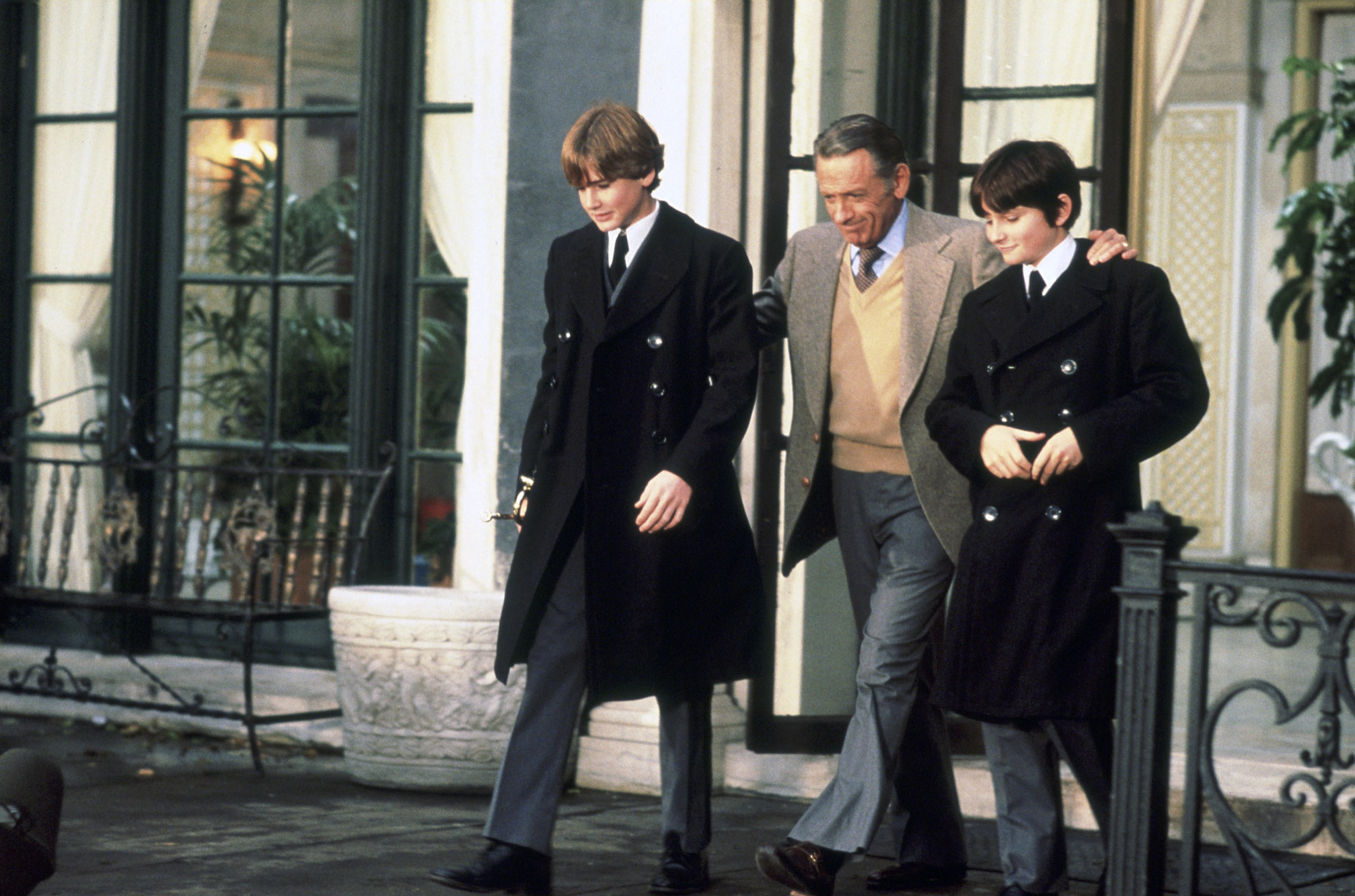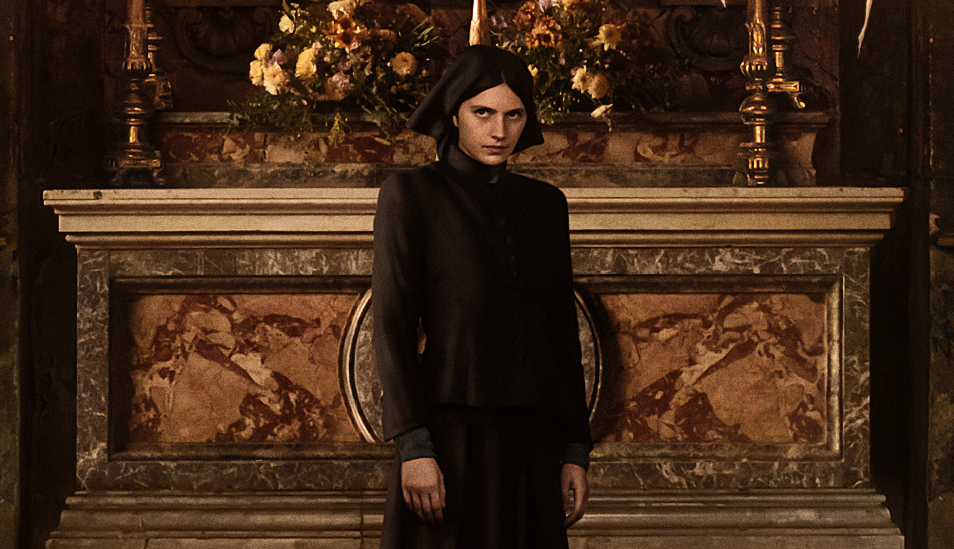The frightfulness establishment gets back to theaters with 'The Principal Sign,' a prequel to the 1976 unique.
The first dramatic set of three finished in the mid '80s, when strict repulsiveness gave way to slasher film. Be that as it may, in brief time frame, The Sign had solidified a heritage inside mainstream society.
The Antichrist, the quantity of the monster (666) and, surprisingly, the name "Damien" became apparatuses in our vocabulary. The Sign supported itself inside the overall outlook for quite a long time without new sections, a unique case inside the class. Yet again and presently, Damien's hold develops, with another contribution.
Arkasha Stevenson's The Main Sign, a prequel to the 1976 unique, is currently in performance centers to captivate crowds with new fear and stunning disclosures. Coordinated to the establishment's resurrection, we're counting down each section of the Sign establishment, from most terrible to best.
1: The Omen IV: The Awakening (1991)
I mightn't in that frame of mind at any point say that Jorge Montesi and Dominique Othenin-Girard's made-for-TV continuation, Sign IV: The Enlivening is a decent film. I can't see you it's especially elegantly composed or effectively thought out. Yet, everything I can say to you is that it made me snicker, a considerable amount, and therefore, I can't say that it's not worth your time.

Set quite a long while after Damien's passing in The Last Struggle, The Enlivening sees the introduction of a young lady, Delia, who is taken on by a youthful Virginian representative, Quality York (Michael York) and his better half Karen (Faye Award).
As Delia (Asia Vieira) develops into youth, she starts showing odd way of behaving alongside a mean streak that wanders into camp. Generally, The Enlivening is an undeniably less powerful retread of The Sign, and frequently verges on spoof.
I'd contend it plays better in the event that you watch it as a spoof. The option of some trendy precious stone hogwash, a snake-plagued tent recovery, and an excessively muddled third-act uncover add a couple of additional kinks to keep you conscious, and from the film feeling completely like a change.
2: The Omen (2006)
Talking about revamps, we as a whole excessively fast show up at John Moore's The Sign, which emerged during the prime of exemplary loathsomeness changes.
The change is definitely not a terrible film, and it has a triumphant cast of entertainers to class it up with Liev Schreiber, Julia Stiles, David Thewlis.

Pete Postlethwaite and Michael Gambon, which provides it with a specific degree of distinction lacking from other ghastliness revamps at that point. The film's greatest blemish, in any case, beyond making Damien (Seamus Davey-Fitzpatrick) look so obviously detestable that it's occasionally comedic, is the manner by which close it slashes to the first, offering next to no in the method of freshness.
The screenplay, composed by Dan McDermott, was so like David Seltzer's unique that the WGA gave sole screenwriting credit to Seltzer regardless of, his having no inclusion with the revamp.
Very much acted and shot with an unmistakable style of mid-2000s gothic melancholy, The Sign change isn't remotely close being an affront to the first, however it misses the mark on desire each and every other dramatic Sign film has had.
3: Damien: Omen II (1978)
Regardless of the first film's ramifications that Damien would be taken on by the President and First Woman, and have free reign in the White House, Wear Taylor's spin-off gets with a juvenile Damien (Jonathan Scott-Taylor) who is presently residing with his industrialist uncle Richard Thistle (William Holden) and auntie Ann (Lee Award) in Chicago, and going to military school close by his cousin Imprint (Lucas Donat).

The movie effectively shuffles the ideas that Damien is troubled by his extraordinary and underhanded reason, and is really a fair, affable individual, and might have remained so notwithstanding the powers pushing him toward evil.
The first film addresses these ardent powers working for Damien's sake and this film drives that much further, bringing up the issue of whether Damien was conceived innately detestable or whether his workers' conviction permits such evil to frame without outcomes.
There's a connecting with thought of current sicknesses from the perspective of corporate science adventures, and a really astounding third-act contort that adds a few extra layers to the story.
While not quite so frightening as the first film, Sign II is a strong subsequent that wavers between the tone of the first and its spin-off, keeping one foot in the domain of possible show and the other into a to some degree absurdist, however welcome, field of B-film repulsiveness.
4: Omen III: The Final Conflict (1981)
Graham Pastry specialist's third portion in The Sign establishment includes a demon so beguiling, you nearly prefer not to see him go. Sam Neill turns on the seethe as 33-year-old Damien Thorne, a worldwide money manager and late deputy as U.S. Minister to the Unified Realm. Damien plays embraced his part as the Antichrist and is attempting to guarantee humanity's annihilation.
However, one thistle stays in his side, the approaching of the new Christ youngster. While Christian professional killers, drove by Father DeCarlo (Rossano Brazzi), make arrangements to at long last stopped the Antichrist.

Damien starts his own chase after the new savior, while additionally extending his run by romancing columnist Kate Reynolds (Lisa Harrow) and controlling her child, Peter (Barnaby Holm), into turning into his pupil.
Neil is extraordinary enjoyable to watch and truly drives the film, yet The Last Clash isn't without a few sensational set pieces, and there's a succession where Damien plays out Herod's Slaughter of the Blameless people in a manner that is still very surprising. The Last Clash goes recklessly into the '80s, working with an abundance that sheds the tastefulness of where the establishment began and completely embraces strict frightfulness with buck-wild, view biting energy.
5: The First Omen (2024)
The 6th section in the Sign establishment satisfies the quantity of the monster, with chief Arkasha Stevenson conveying a horrendously radiant film that makes the most of its '70s setting through camerawork and Aaron Morton's cinematography, which summon that period of filmmaking.

Set long before Damien's introduction to the world, the prequel film focuses on Margaret (Nell Tiger Free), a youthful American newcomer who is shipped off care for vagrants at a congregation in Rome. There, she interfaces with a strange little kid, Carlita (Nicole Sorace), and reveals a dim intrigue inside the congregation.
Prequels are in many cases troublesome, given their temperament of prompting occasions we definitely know. However, The Primary Sign handily winds through the natural.
Utilizing The Sign's Dad Brennan (Ralph Ineson), while making something that feels new and that avoids going against the occasions of the first film. It accomplishes what simply the best prequels do, which is that it is added substance to the experience of the first film.
There's likewise the variable that The Principal Sign is a damn dreadful undertaking that pushes limits and, in minutes, demonstrates so stunning that it's difficult to accept this was a studio discharge (from Disney, no less) and wasn't hit with a NC-17 rating. Surely, by the present principles, the film is the most unnerving of the establishment.
Free's exhibition is something else, and in an establishment worried about parenthood however seldom ladies, she makes a perplexing mankind inside Margaret close by a sort of moving admiration as she turns out to be progressively, perilously, off the wall. While it's continuing in the strides of The Sign, The Initial Sign likewise feels like an important examination concerning the job of the congregation, ladies and what we need to fear in the present society.
6: The Omen (1976)
Yet again richard Donner's fundamental exemplary promoted the possibility of the Antichrist in reality as we know it where Christianity was simply starting to grab hold in America, with brought back to life Christianity advocated by then-official confident, Jimmy Carter.

Carter wasn't just liable for carrying brought back to life Christianity to the standard, yet he likewise helped close the split among provincial and metropolitan socioeconomics, joining Majority rule and conservative citizens under his Popularity based run.
He succeeded and therefore, conservatives worked considerably more diligently to re-open that crack between citizens in such a manner it couldn't be shut once more.
This is all urgent to understanding the reason why The Sign functions admirably, and in spite of beginning blended surveys, evoked an emotional response from crowds. Gregory Peck and Lee Remick play the appalling guardians of Damien (Harvey Spencer Stephens), the Antichrist.
While David Seltzer's unique content leaned toward uncertainty about whether Damien was or alternately wasn't the child of Satan, Donner needed purposeful affirmation, an unmistakable response that evil existed and damnation was genuine which, since time is running short of its delivery, just helped the film out. Thinking back on The Sign today, it's very fascinating the way that brief period Peck's Richard Thistle enjoys with Damien.
There's not a relationship laid out between them, so it's less of an illustration of the housebound 'detestable kid' subgenre, and a greater amount of an insightful excursion with Thistle and photographic artist Keith Jennings (David Warner) digging further into the idea of malevolence, until they lose themselves all the while.
Donner's Sign fills in as well as it does and stands separated from the other huge strict blood and gore movies of the time, Rosemary's Child (1968) and The Exorcist (1973), resting on Donner's past experience coordinating analyst driven TV series like Cannon, Kojak, and Bronk.
While additional movies held a light up to the substance of malicious, lessening a portion of detestable's persona, Donner kept it to a great extent in the shadows and let the secret lead the characters, and crowds, further down into the dim.












